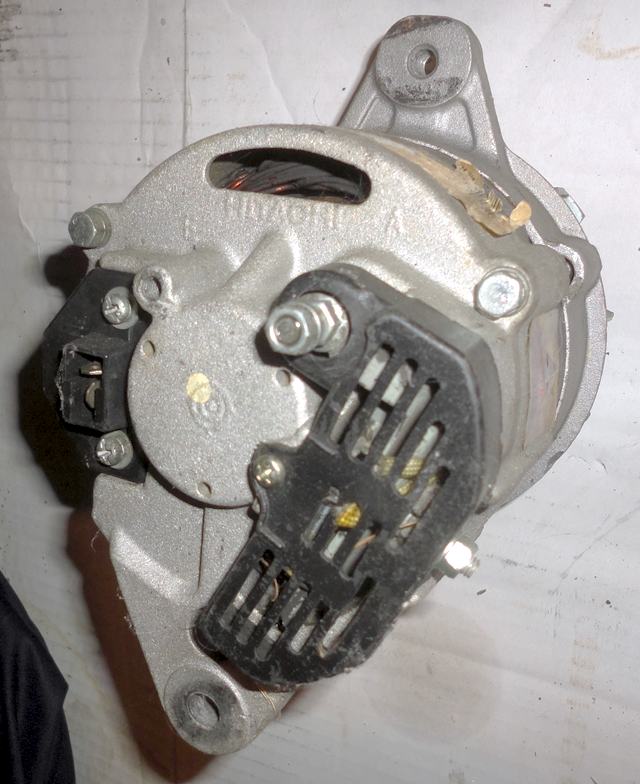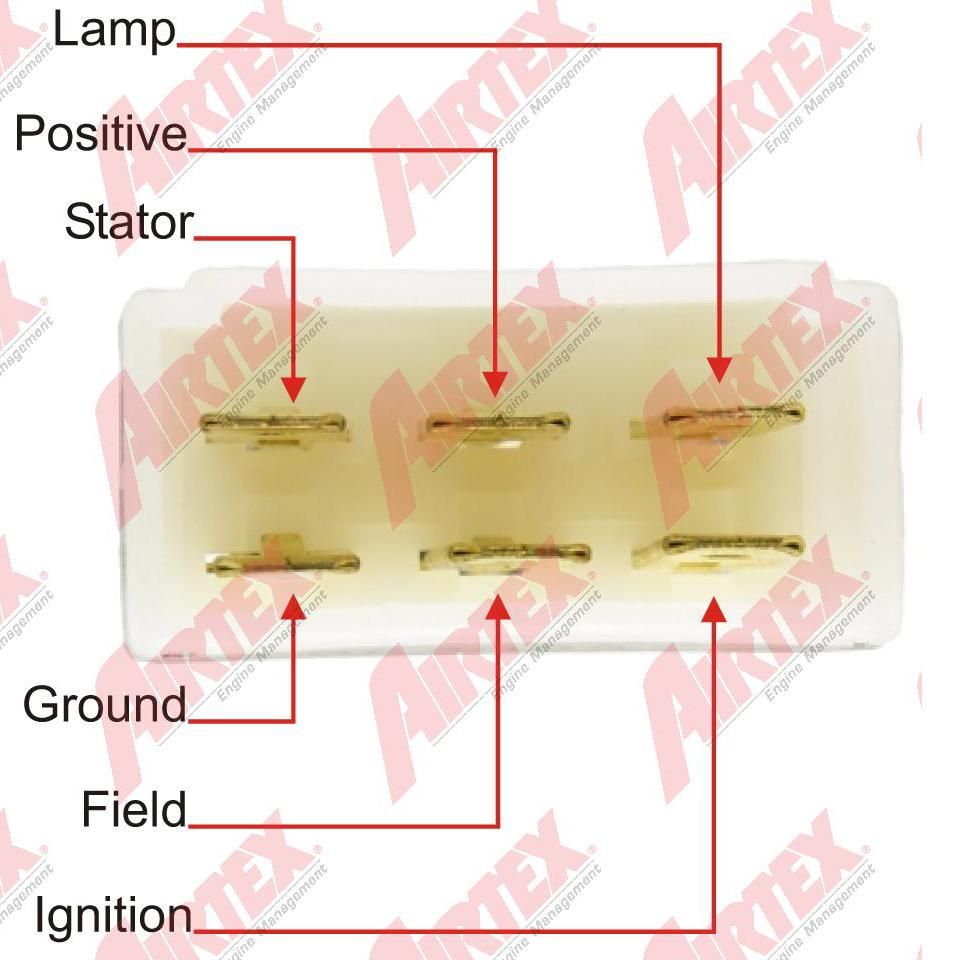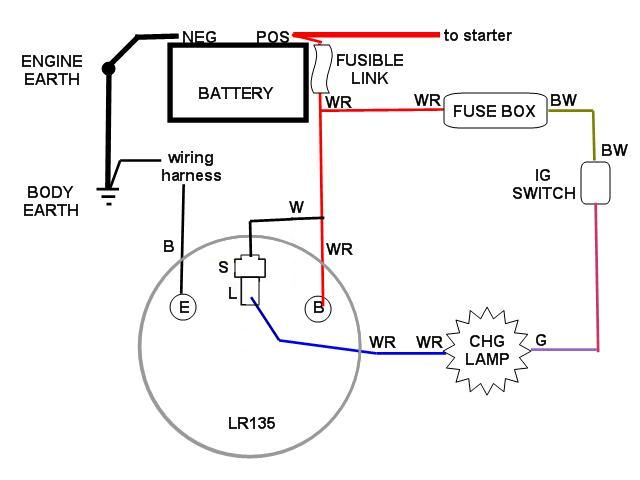Early 1200 use Alternator with external Voltage regulator. Later 1200s (from 1981) use an Internally Regulated (IR) Alternator.
Contents |
Overview
B110 alternator is 35A and has plastic cover on back

1980s 1200 is still 35A but uses internal regulator
Both use the same T-connector, but IC REG alternator socket is additionally notched


Early 1200
Our Datsun B110 used -- as with most 1964-1974 cars -- an Alternator with external Voltage regulator.
Alternator Connections| terminal | Color | Logical Connections |
| A (Alternator) | WR or W | * To Battery + terminal through the Fusible Link * To Regulator "A" terminal (W wire) |
| F (Field) | WB | * To Regulator "F" terminal |
| N (neutral point) | Y | * To Regulator "N" terminal * To electric choke relay Y wire |
| E (Earth/ground) | B | * To body ground * To Regulator "E" terminal |
Alternator uses the typical 1970s T-shaped connector: F Field - stem of Tee N Neutral point - head of TeeRegulator Connections
| terminal | Color | Logical Connections |
| A (Alternator) | W | * To Alternator "A" terminal (WR or W) |
| F (Field) | WB | * To Alternator "F" terminal |
| N (neutral point) | Y | * To Alternator "N" terminal * To electric choke relay Y wire |
| E (Earth) | B | * To body ground * To Alternator "E" terminal |
| IG (ignition) | WL (72: W?) | * To fuse box "M" terminal (does not go through IGN switch) |
| L (Light) | WR | * To dash light "IGN" ('72, '73) or "CHG" (1971) |
Voltage Regulator Pinout

Wire Color L Lamp (to dash lamp) W Positive (12V from Fusible Link) Y Stator (Neutral point, tee-connector N) B Ground (Earth to horn bracket) Y Field (Tee-connector F) WL Ignition ('M' fuse)
Late-model Alternator
Datsun 1200 from 1981 (Japan-market models) use an internally-regulated Hitachi LR Alternator or equivalent.

Using in Older 1200
The LR135 is a bolt-in replacement for the LT135 BUT you must modify the wiring slightly.
See main article: IR Alternator Conversion Wiring
Engine Swaps
See main article: Basic Alternator Wiring
How the Alternator Dash Light Works
The dash lamp is connected to IGN +. The other side goes to the "L" terminal of either the external regulator or alternator. A relay turns the dash lamp on/off.
- When the alternator is not putting out current, the "L" terminal is at ground/earth, so the dash light turns on
- Once the alternator starts putting out current, the "L" terminal is at full voltage, so the light turns off (both sides of the light are at same voltage)
WARNING: If the dash lamp is burned out, the alternator does not work. The lamp circuit is used to start the alternator.
External Regulator
The dash lamp is connected to IGN +. The other side goes to the "L" terminal of the external regulator. A relay inside the Voltage Regulator turns the dash lamp on/off.
- When the alternator is not putting out current, the "L" terminal is at '-' voltage, so the dash light turns on
- Once the alternator starts putting out current, the "L" terminal is at + voltage, so the light turns off (both sides of the light are at +)
This also is connected to the F (field) connection of the alternator, so it "turns on" the alternator. It is the switched 12V (through the lamp) that kick starts the alternator fields.
Internal Regulator
Internally regulated Hitachi LR alternators (S-L type) use the L terminal to turn the dash lamp on and off, using a transistorized switch inside the alternator.
Automatic Choke Relay
On Datsuns equipped with an electric Automatic Choke, a relay is used so that the choke heater is activated only when the engine is running.
See main article: Electric Choke Wiring

![[Datsun 1200 encyclopedia]](/wiki/upload/wiki.png)
